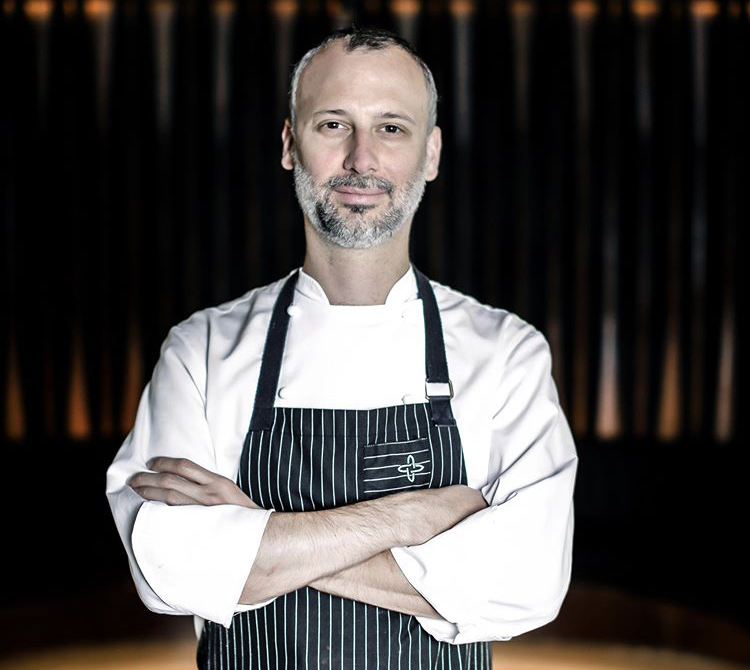Kitchen Connect’s Chris Jaeckle on Why He’s Bullish About New York City Restaurants
Award-winning chef Chris Jaeckle, who runs Kitchen Connect Consulting, remains optimistic for the future of restaurants. Read on to find out why he’s choosing a glass-half-full outlook.
Home » Kitchen Connect’s Chris Jaeckle on Why He’s Bullish About New York City Restaurants

By: Chris Jaeckle
It’s no secret that New York City restaurateurs are facing unprecedented challenges and will for at least the foreseeable future. As the fallout from COVID-19 continues to impact the city’s dining scene, however, some restaurants are navigating the challenges successfully. Award-winning chef Chris Jaeckle, who runs Kitchen Connect Consulting, remains optimistic for the future of restaurants. Read on to find out why he’s choosing a glass-half-full outlook.
A Reckoning Was Coming
“For the last two or three years, I’ve been saying the industry was due for a correction,” Jaeckle says. “Obviously this is a much larger correction than we needed or anyone would hope for restaurants, but, overall, we were just not making money.” From inflexible landlords to a customer base that grew ever more demanding for quality food and wine at cheap prices, it was becoming more and more challenging for restaurants to turn a profit.
Consumers Are Getting Savvier
The bright side now is that consumers are starting to realize that quality comes at a cost. “Because of the pandemic, people are recognizing how much it costs to get this food from wholesalers in their homes,” he says. As a result, this will ultimately enable restaurants to raise prices and widen their margins.
“A year ago, people would balk at a thirty-eight dollar chicken, but now when they order that chicken from wholesalers and see similar pricing, they’re going to understand where we’re coming from.”
The Smart Restaurants Are Surviving
Savvy restaurateurs are using data and logistics to weather the storm. “They’re looking at their numbers, their bestsellers, the repeat purchases of those things, and just letting everything else fall away,” says Jaeckle.
But they’re not just cutting — they’re also adding. “When you think about delivery, you have to have a salad, you have to have a soup.” And if a dish doesn’t travel well for take-out and delivery, operators are reimagining presentations. “If the numbers show a demand, it’s time to get creative. If forty percent of your orders are for French onion soup, maybe you create a branded crock for it. You’ll take a hit on it right away, but then your brand sits in someone’s home and that makes them think of you and your soup.”
Chefs are also revisiting dishes to accommodate people’s desire to cook at home more. “They’re making some offerings a little more interactive so it will elevate the quality to almost where it was in the restaurant,” he says.
Kitchens May Actually Get Bigger
One of the biggest mistakes Jaeckle has seen restaurant owners make is having kitchens that are too small to accommodate their concept. “The most common thing I see is a lack of understanding of how much space the back of the house needs,” he says. With delivery and take-out dominating and restaurants operating at limited indoor (if any) capacity, the kitchen has become the focal point at most operations.
“You know, I’d see a farm-to-table restaurant with a one-hundred by fifty-foot kitchen, and, as a chef, I’m thinking, well, where are you storing the preserves? The farm just produced two-hundred pounds of tomatoes. Do we even have a place to process two-hundred pounds of tomatoes?” Now with restaurateurs being more strategic than ever, that divide between the front-of-house and back-of-house may finally be bridged.
The Future Looks Bright (Really!)
“When things get tough, people get creative — and they are doing just that,” says Jaeckle. He admits that the next few months are “going to be brutal,” but, he says, “I am forever an optimist when it comes to life. And I’m really bullish about the second half of 2021. The restaurants that are focused on quality are going to come roaring back.”
While the last year has helped in consumer education, it also helped with reflection. “In positive ways, it’s causing people to look at their businesses and examine what works and what doesn’t.” Ultimately, this is also a time for restaurateurs to assess their lives overall. “Determine what’s important to you and what you are or aren’t getting out of the business emotionally, physically. If you’re getting enough positive out of the business, regardless of the financial situation, stick around and try to figure it out,” he says.
Back to Blog PostsAbout NYCHG
Established in 2009, The New York City Hospitality Group ("NYCHG") is a New York City-centric organization dedicated to serving the restaurant and hospitality industry. NYCHG is comprised of the best in class professionals that act as a resource to each other and the hospitality community.
Subscribe
2019 nychg.org | Apply for Membership

